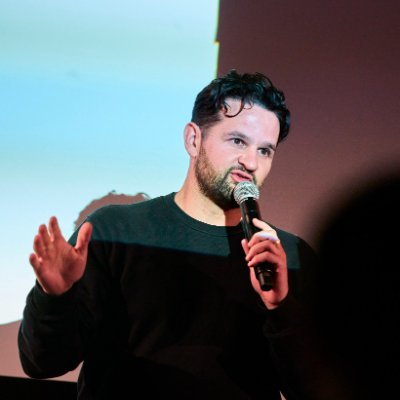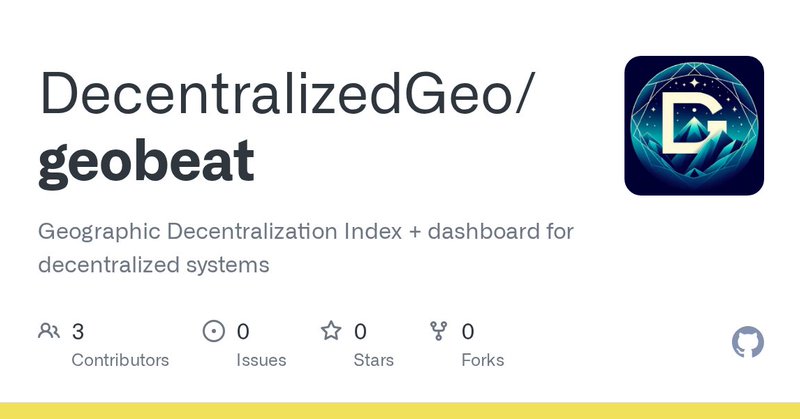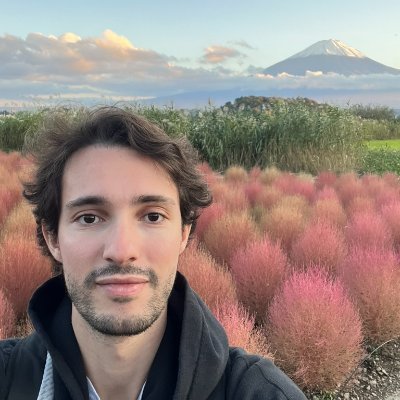
johnx 📍in transit
@johnx25bd
Followers
2K
Following
4K
Media
175
Statuses
2K
I connect dots. ✨ Building @AstralProtocol, Research Affiliate @UnivofMaryland. Past: @ToucanProtocol, @WEF, @OrdnanceSurvey, @NatlSkiPatrol, @casabonita. KB0.
London, England
Joined November 2016
The post sketches the contours of the emerging field of proof-of-location — from categories of evidence, to “stamps” and stacked “proofs,” to privacy and other open challenges. If this resonates, we’d welcome feedback: https://t.co/46IQzBx2Oc
0
0
8
I’ve had The Beginning of Infinity unread on my shelf for a while. It feels like a good explanation. It reminds me of @Kernel0x’s education philosophy – peer learning, “unschooling” society, by recognizing that appealing to authority for truth limits us all … Time to read …
The most radical idea I learned from The Beginning of Infinity: All human progress comes from one thing. Not talent. Not experience. Not gurus. The creation of good explanations. Once you see this, everything changes. @DavidDeutschOxf 0/15
0
0
0
I try not to spread myself thin by trying all the AI tools — I'm trying to execute, not explore. But this tweet made me try Gemini 3. I'm quite impressed. But I feel more hesitant to expose my work: Google feels more capable of stealing IP. What's best? Thoughts?
Holy shit. I’ve used ChatGPT every day for 3 years. Just spent 2 hours on Gemini 3. I’m not going back. The leap is insane — reasoning, speed, images, video… everything is sharper and faster. It feels like the world just changed, again. ❤️ 🤖
0
0
0
Wow. Lots to process. Coming into Devconnect, I decided to focus on quality over quantity, lessons from 7 years of Web3 conferences. Taking time with people helped me develop a deeper understanding, shape my direction of travel, and surface hidden opportunities. More soon.
0
0
3
We're getting some beautiful maps out of some Ethereum geographic data tools — Armiarma is cool✨ 🙏 to @miga_labs — they know that being online to support devs during @ETHGlobal hacks is a winning strategy
1
2
5
Our team is hacking at @ETHGlobal — we're developing a Geographic Decentralization Index + an accompanying dashboard, Geobeat. The goal: to understand where networks actually operate across physical, legal, + infrastructure dimensions. Input is welcome! https://t.co/4IbHq9B4pv
github.com
Geographic Decentralization Index + dashboard for decentralized systems - DecentralizedGeo/geobeat
0
0
2
Today when I met with @sandeepnailwal, I wanted to pick his brain on GTM strategy. He set me straight. in this attention environment, I need to put as much into “GTN”: Go-To-Noise. An audience opens many doors. 🙏 Sandeep, stay tuned for what’s coming from @AstralProtocol ✨
18
6
124
One of the most important events of the year for funding impact in web3 - hope to see you there!
When systems fall short, we have a chance to build better ones. 💻☀️ Funding the Commons: Buenos Aires brings together those designing financial access, governance, and trust for the real world. Join us Nov 19 at Fundación Beethoven to shape the future of open infrastructure.
0
2
10
Important problems getting the attention they deserve (from the UK gov) If you’re in crypto and paying attention to AI, you should check this out
we just released v1 of our thesis 'Scaling Trust', our plans for a ~£50m r&d @ARIA_research programme. let us know what you think, we want your feedback! https://t.co/eWqaQL7Ixf
2
1
7
Just arrived at Frontier Forum by @SpaceComputerIO – probably the coolest stage I’ll ever speak on 🤩 I’m up in about an hour, I think there’re tickets at the door …! https://t.co/aTLZauAJ2l
0
0
3
Argentina Onchain is presenting at the Governance Hub at Devconnect right now – if you’re around, come listen 🤩🇦🇷
0
0
12
Super excited to share the vision later today at Frontier Forum ✨
@blocksec @Offchain @allred_chase @arbitrum @prabalbanerjee @AvailProject @matan_si @EO_Network @0xbowio @ameensol @auryn_macmillan @EnclaveE3 @jbaylina @ziskvm @Socrates @flashbots_x @Nethermind @mpfzajac @poddotnetwork @shresth3103 @kokebsolomon @gnosisdotio @hoprnet @SCBuergel @StoffelMPC @badcryptobitch @hashcloak @t1protocol @OrestTa @FireblocksHQ @arik_g @DefiantNews @CamiRusso @OasisProtocol @matejanez @StarkWareLtd @odedonn @edgeandnode @graphprotocol @PhalaNetwork @ChaoticBeautys @DistributedMarz @martinlecl @iEx_ec @speech_ngo @EspressoSys @jillrgunter Taking to the Frontier Forum stage, welcome John Robison Hoopes, founder of @AstralProtocol. @johnx25bd’s work on multi-signal location proofs explores how networks, sensors, and hardware attestations can converge into credible, tamper-resistant maps of the physical world. At
0
1
6
This past week we got to put our tools to the test, building a place-based app on Astral with the @ethereumfndn, @deepwork_studio, and @cotesma, a local ISP in Patagonia. Tomorrow we're presenting what we built at @EFDevcon in Buenos Aires — if you're around, come watch! (Demo
0
3
6
Astonishing and unsurprising. The most credible response I’ve seen to this is from @tegmark and @steveom – provably-safe AI, and a race to fix critical vulnerabilities before they can be exploited by increasingly sophisticated autonomous attacks … https://t.co/sE4wIQvoY9
lesswrong.com
In September 2023, Max Tegmark and Steve Omohundro proposed "Provably Safe AI" as a strategy for AI Safety. In May 2024, a larger group delineated th…
We believe this is the first documented case of a large-scale AI cyberattack executed without substantial human intervention. It has significant implications for cybersecurity in the age of AI agents. Read more:
0
1
2
I'm building with @kischiman — stretch goal is to deploy testnet contracts. I'm anticipating the ETH faucet friction ... anyone have spare testnet ETH handy? johnx.eth 🫶 cc @adamspiers @positonic @orishim @jacobwillemsma 🙏
1
0
2
If you’re wondering how I feel about @JoinEdgeCity, well … the only other hat from this ecosystem I’ve actually *paid money for* is from @BoysClubWorld Yeah
1
0
3












